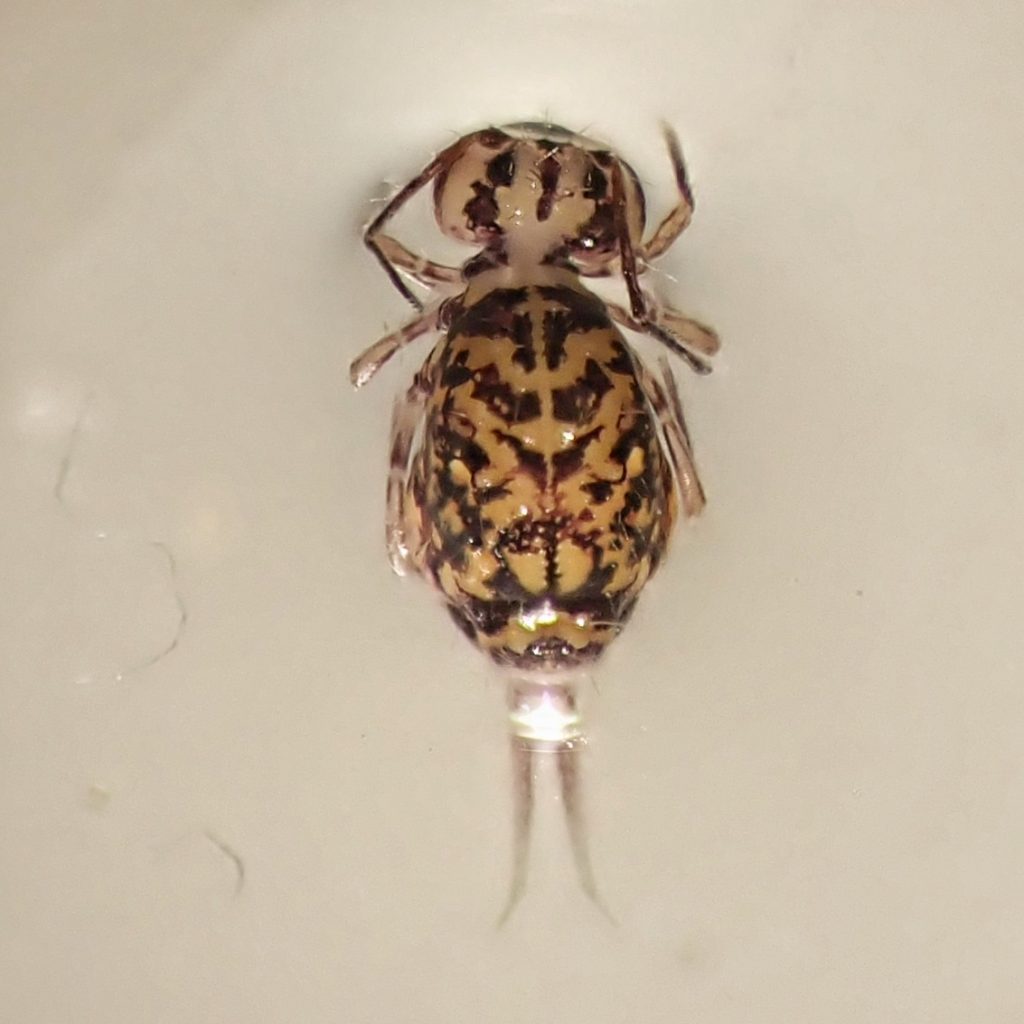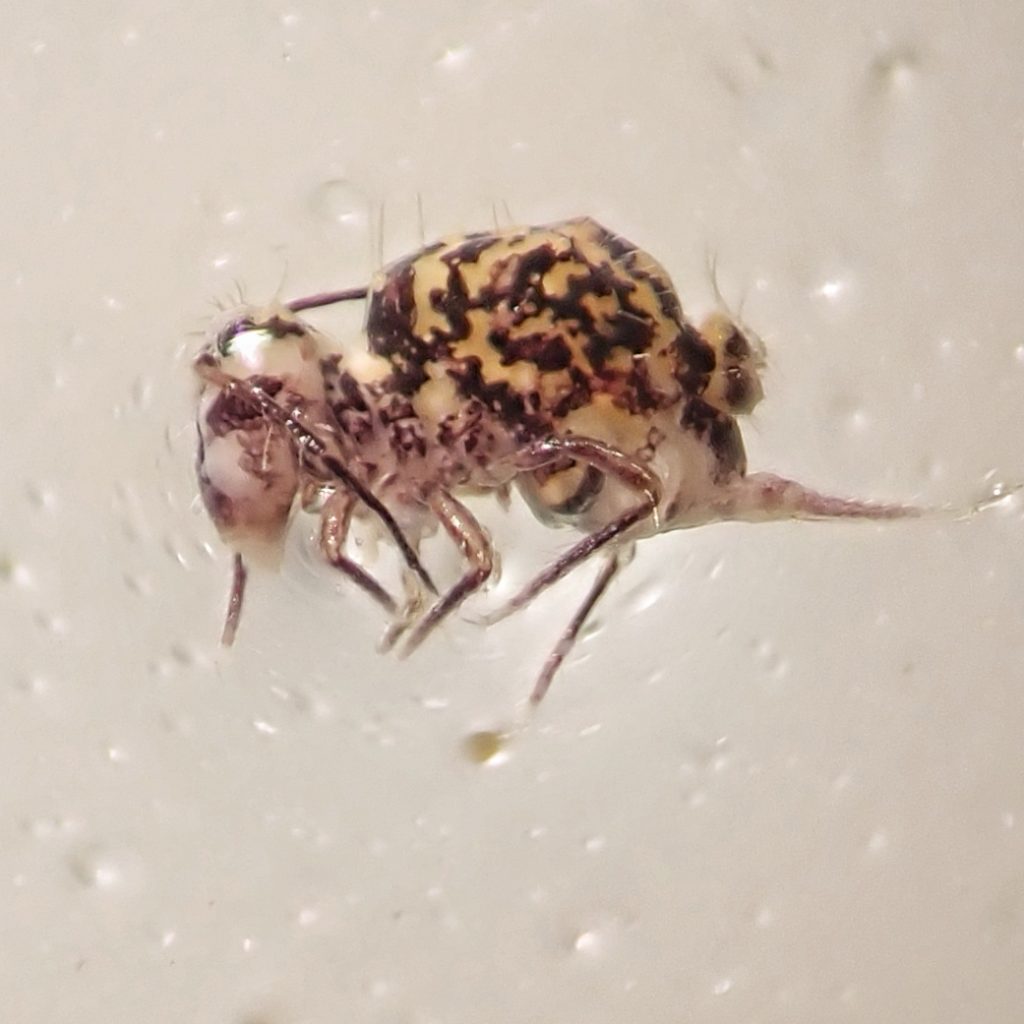
This was the springtail I did find when I also found the Pinodytes sp. that I profiled yesterday. I thought this was a Ptenothrix, but had no resources to go further. So I posted it on BugGuide, and less than a day later Frans Janssens identified it as P. marmorata. And it turned out to be not only the first BugGuide record for this species in Washington, but the first BugGuide record for the whole western US (though there is one from Alberta). Undoubtedly this has far less to do with any rarity of this species in the west, and much more to do with the combination of people not really looking for springtails, and the extreme difficulty of taking a photo of a live springtail that is clear enough and shows enough salient details to be identifiable. But still, it is very cool and satisfying to be responsible for the only dark square in an entire geographic region.
Ptenothrix marmorata is in the order Symphypleona (globular springtails) and in the family Dicyrtomidae. There is a dearth of information about this taxa of springtails, and almost nothing concrete. For an overview of collembolids in general, see my post on Orchesella villosa. I apologize for the lack of photos. I only had the one specimen, and it shriveled quickly after these two photos because I forgot to cover the Petri dish and the alcohol evaporated.

Description-Medium sized (this one was 1.9mm) for a collembolid, with a bilaterally symmetrical pattern of dark and light that includes a light colored mid-dorsal stripe.
Similar species-Springtails in the order (or possibly suborder, depending on the taxonomists you listen to) Neelipleona are eyeless and pigmentless; those in the orders Entomobryomorpha and Poduromorpha have elongated bodies; other members of the order Symphypleona are best separated with good magnification and a key.
Habitat-Under logs and other woody debris, and in the leaf litter, of moist to mesic forests and woodlands.
Range-North America and northern South America, and in Eastern Asia near the Pacific; probably region wide in appropriate habitat.
Eats-Some of the only species specific information I could find on Ptenothrix marmorata was an examination of their stomachs, which found plantmatter during all conditions, and also astigmatid mites during drought conditions.
Eaten by-Salamanders, small birds, predatory arthropods.
Adults active-Probably year around, but deep under cover in the coldest and driest times.
Life cycle-Eggs are probably laid in clusters in the soil;
Etymology of names–Ptenothrix may be from the Greek words for ‘feathery hair’ but I can’t say for certain. The specific epithet marmorata is probably from the Greek word for ‘marble’, and most likely refers to the patterns of light and dark on the dorsal surface of these springtails.
https://bugguide.net/node/view/83750
http://www.ibiologia.unam.mx/pdf/biblioteca/artzoo/anal75_1/anazoo751_5.pdf
Congratulations on the find! That’s definitely another feather in your cap 🙂
Thanks, Kat!